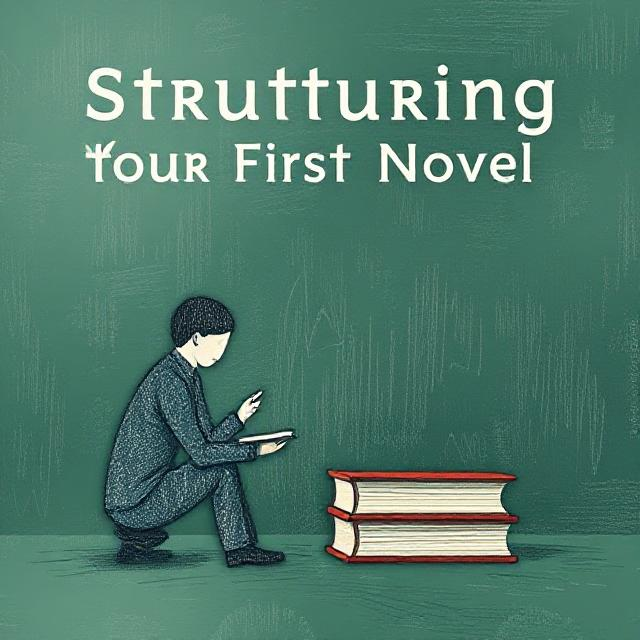Writing your first novel can be an exhilarating yet daunting task. While creativity is essential, structuring your novel effectively can help transform your ideas into a compelling and readable story. This guide will walk you through the fundamental steps of structuring your first novel, from developing a strong foundation to refining your final draft.

1. Understanding the Importance of Structure
Structure serves as the backbone of your novel, guiding your narrative and ensuring it flows logically. A well-structured novel enhances pacing, maintains reader engagement, and prevents unnecessary plot holes. Without structure, even the most exciting story ideas can become confusing and disjointed.
2. Choosing a Narrative Structure
There are several common narrative structures to consider when crafting your novel:
a. Three-Act Structure
This classic structure is widely used in literature and screenwriting:
- Act 1 (Setup): Introduces the protagonist, setting, and central conflict.
- Act 2 (Confrontation): Expands on the conflict, introducing challenges and character development.
- Act 3 (Resolution): Concludes the story, resolving major conflicts and character arcs.
b. The Hero’s Journey
Popularized by Joseph Campbell, this structure is often seen in fantasy and adventure stories:
- The Call to Adventure
- Meeting the Mentor
- Crossing the Threshold
- Tests, Allies, and Enemies
- The Supreme Ordeal
- The Reward and Return
c. The Snowflake Method
This method involves starting with a simple idea and gradually expanding it. It begins with a single sentence summarizing the story and builds outward into paragraphs, character descriptions, and plot points.
3. Developing Strong Characters
A well-structured novel relies on compelling characters. Here’s how to create them:
- Protagonist: The central character who undergoes growth or change.
- Antagonist: The force opposing the protagonist, adding conflict.
- Supporting Characters: Allies and adversaries who enhance the story.
- Character Arcs: Show character transformation through struggles and achievements.
4. Building a Captivating Plot
Your plot should keep readers engaged. Consider these elements:
- Inciting Incident: The event that sets the story in motion.
- Rising Action: Challenges and conflicts leading to the climax.
- Climax: The most intense and pivotal moment.
- Falling Action: Events following the climax that lead to resolution.
- Resolution: Ties up loose ends and concludes the story.
5. Creating a Vivid Setting
The setting enhances the reader’s immersion in your world. Develop your setting by:
- Using sensory details (sight, sound, smell, touch, taste).
- Establishing mood and atmosphere.
- Making the setting influence the plot and characters.
6. Writing Strong Scenes and Chapters
Each scene should serve a purpose:
- Start with Action or Conflict: Grab the reader’s attention.
- Include Dialogue: Develop character voice and relationships.
- End with a Hook: Encourage readers to continue to the next chapter.
7. Editing and Refining Your Structure
After completing your first draft:
- Review the Overall Structure: Ensure consistency and logical flow.
- Trim Unnecessary Details: Remove filler content.
- Seek Feedback: Beta readers and editors can provide valuable insights.
- Revise and Polish: Multiple drafts help refine your novel.
Structuring your first novel requires planning, patience, and creativity. By following these guidelines, you can create a well-organized and engaging story that captivates readers. Remember, structure is a tool to enhance storytelling, not a restriction. So, experiment, refine, and most importantly—enjoy the writing process!

